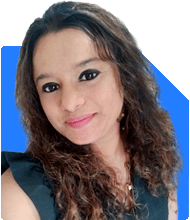31-Year-Old Amit Aims to Retire at 45: Should He Tweak His Investment Strategy?
Ramalingam Kalirajan |10902 Answers |Ask -Follow
Mutual Funds, Financial Planning Expert - Answered on Jul 17, 2024
He has an MBA in finance from the University of Madras and is a certified financial planner.
He is the director and chief financial planner at Holistic Investment, a Chennai-based firm that offers financial planning and wealth management advice.... more

I am Amit 31yr old, having savings of Cash in hand-4 lacs, FD-6 lacs, PPF-2 lacs, MF-7 lacs, NPS-4 lacs, PF-65 lacs, Equity-7 lacs(mostly good small/mid caps). I want to retire at 45. Salary is around 1.4 lpm. SIP of 15k in MF, 10K in equity, VPF-10K, NPS-5K. Won't invest much in NPS as it will locked for 60yrs. Will increase MF Sip by 10k per year. Kindly suggest any changes required in my plan.
You have a clear goal of retiring at 45. Your current savings and investments are impressive. You have Rs. 4 lakhs in cash, Rs. 6 lakhs in FD, Rs. 2 lakhs in PPF, Rs. 7 lakhs in mutual funds, Rs. 4 lakhs in NPS, Rs. 65 lakhs in PF, and Rs. 7 lakhs in equity. Your monthly salary is around Rs. 1.4 lakhs, and your current SIPs are Rs. 15,000 in mutual funds, Rs. 10,000 in equity, Rs. 10,000 in VPF, and Rs. 5,000 in NPS. You plan to increase your SIP by Rs. 10,000 each year. Let’s review your plan and suggest any necessary changes.
Evaluating Current Investments
Mutual Funds
Your SIP in mutual funds is Rs. 15,000 per month. You plan to increase it by Rs. 10,000 annually. This is a solid approach. Actively managed mutual funds can provide better returns compared to index funds. They adapt to market changes, potentially yielding higher returns.
Direct vs. Regular Funds
Investing through direct funds may seem cost-effective. However, regular funds through a Certified Financial Planner (CFP) provide expert guidance. This helps in making informed decisions and optimizing your returns.
Equity Investments
Your Rs. 10,000 SIP in equity is commendable. Investing in small and mid-cap stocks can offer high returns. Ensure you review and adjust your portfolio based on market conditions.
Analyzing Other Investments
Provident Fund (PF)
Your PF is Rs. 65 lakhs, which is substantial. Continue with your contributions. The compound interest here will significantly boost your retirement corpus.
Voluntary Provident Fund (VPF)
Your Rs. 10,000 monthly contribution to VPF is good. It offers tax benefits and a safe return. Keep it as part of your diversified portfolio.
Public Provident Fund (PPF)
Your PPF balance is Rs. 2 lakhs. Continue to invest in PPF as it offers tax-free returns. It’s a good long-term investment.
National Pension System (NPS)
You have Rs. 4 lakhs in NPS and contribute Rs. 5,000 monthly. Since you don’t prefer the long lock-in period, it’s fine to not increase your NPS contributions.
Fixed Deposits (FD)
You have Rs. 6 lakhs in FD. This is good for liquidity and safety. Ensure you don’t keep too much in FD as it offers lower returns compared to other investments.
Cash in Hand
You have Rs. 4 lakhs in cash. It’s always good to have liquid cash for emergencies. Ensure this amount is easily accessible.
Recommendations for Future Investments
Increase SIP in Mutual Funds
Your plan to increase your SIP in mutual funds by Rs. 10,000 annually is excellent. This will significantly grow your retirement corpus.
Emergency Fund
Maintain an emergency fund covering 6-12 months of expenses. This fund provides financial security against unforeseen events.
Diversify Investments
Diversify your portfolio. Include a mix of large-cap, mid-cap, and small-cap funds. Consider sectoral funds to balance risk and returns.
Professional Guidance
Consult a Certified Financial Planner (CFP). They offer personalized advice and help optimize your investments. Regular reviews and adjustments will keep your portfolio aligned with your goals.
Final Insights
Your current investments and future plans are on track. Continue increasing your SIP in mutual funds. Maintain an emergency fund and diversify your investments. Consult a CFP for personalized advice. This approach will help you achieve your goal of retiring at 45.
Best Regards,
K. Ramalingam, MBA, CFP,
Chief Financial Planner,
www.holisticinvestment.in
You may like to see similar questions and answers below
Ramalingam Kalirajan |10902 Answers |Ask -Follow
Mutual Funds, Financial Planning Expert - Answered on Jul 16, 2024
Ramalingam Kalirajan |10902 Answers |Ask -Follow
Mutual Funds, Financial Planning Expert - Answered on Jul 17, 2024
Jinal Mehta | Answer |Ask -Follow
Financial Planner - Answered on Jun 24, 2024
Ramalingam Kalirajan |10902 Answers |Ask -Follow
Mutual Funds, Financial Planning Expert - Answered on Sep 14, 2024
Samraat Jadhav |2514 Answers |Ask -Follow
Stock Market Expert - Answered on Dec 18, 2025
Reetika Sharma |432 Answers |Ask -Follow
Financial Planner, MF and Insurance Expert - Answered on Dec 18, 2025
Reetika Sharma |432 Answers |Ask -Follow
Financial Planner, MF and Insurance Expert - Answered on Dec 18, 2025
Reetika Sharma |432 Answers |Ask -Follow
Financial Planner, MF and Insurance Expert - Answered on Dec 18, 2025
Samraat Jadhav |2514 Answers |Ask -Follow
Stock Market Expert - Answered on Dec 18, 2025

Kanchan Rai |648 Answers |Ask -Follow
Relationships Expert, Mind Coach - Answered on Dec 18, 2025
Kanchan Rai |648 Answers |Ask -Follow
Relationships Expert, Mind Coach - Answered on Dec 18, 2025
Anu Krishna |1754 Answers |Ask -Follow
Relationships Expert, Mind Coach - Answered on Dec 18, 2025
Anu Krishna |1754 Answers |Ask -Follow
Relationships Expert, Mind Coach - Answered on Dec 18, 2025
Anu Krishna |1754 Answers |Ask -Follow
Relationships Expert, Mind Coach - Answered on Dec 18, 2025
























